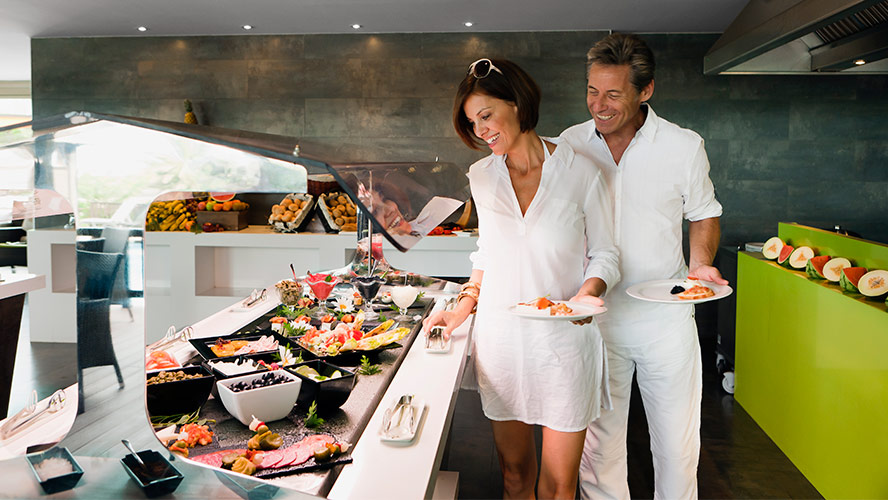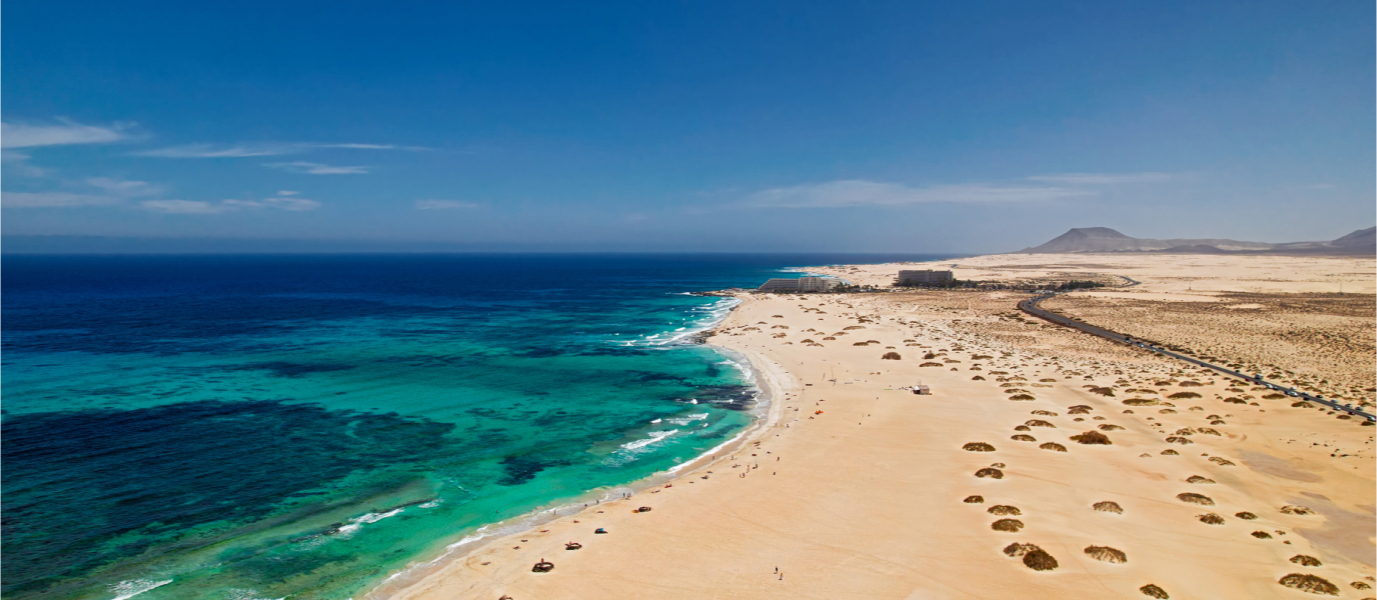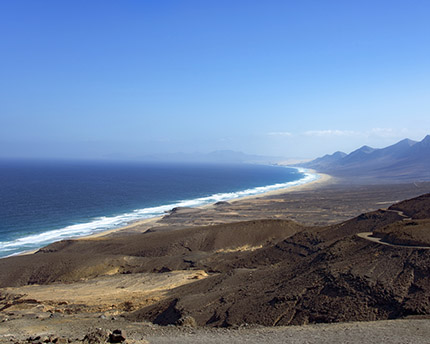Located in the southern municipality of Pájara, the Costa Calma resort is now one of Fuerteventura’s most important tourist destinations. Set at the top of the Jandía Peninsula—formerly an island in its own right, separated from Fuerteventura—Costa Calma is one of the island’s youngest inhabited areas, built during the tourism boom of the early 1970s.
Nowadays, with around 5,000 registered residents (and a floating population of 15,000 people all year-round), Costa Calma is an internationally renowned holiday destination. The resort is blessed with a series of surrounding beaches—commonly referred to as the Costa de Sotavento—and the beauty of the Jandía Natural Park in which it lies. On the other hand, owing to the constant trade winds that batter its coastline, the area is home to a large number of windsurfing and kitesurfing schools. Meanwhile, the Oasis Wildlife Fuerteventura, a huge zoo located in the neighbouring town of La Lajita, is a guaranteed hit with the little ones.
For the icing on the cake to your time in this charming and isolated slice of southern Fuerteventura, we recommend a spot of stargazing from one of its several viewpoints or sampling authentic local cuisine in one of its many restaurants.
What to see and how to get to Costa Calma
The name Costa Calma—not to be confused with Majorca’s ‘Costa de la Calma’—ironically derives from the sea winds that batter the coastline throughout the year, creating small waves and the constant coming and going of sands from the nearby Jandía dunes.
Costa Calma lies 67 kilometres from Puerto del Rosario, the capital city of Fuerteventura. Easily reached along the main FV-2 motorway, Costa Calma is surrounded by palm trees, sand dunes and extensive white sandy beaches. The centre of the resort, meanwhile, offers a heterogeneous mix of imposing tourist apartments and hotels and a residential area of whitewashed bungalows. Whereas prior to 1970 Costa Calma was only home to disperse sets of humble houses, the area’s popularity amongst foreign tourists—particularly from Germany and United Kingdom—has done nothing more than increase the area’s accommodation options. The area’s leisure offerings are completed by a series of beachfront bars and restaurants, shopping centres and surf schools.
Costa Calma beaches, Sotavento
Without a shadow of doubt, Costa Calma’s beaches are its main attraction. In fact, many claim that these are some of Fuerteventura’s most beautiful beaches. Lying at the feet of the desert landscape of the Jandía Natural Park and facing out to the lashing winds of the vast Atlantic Ocean, the Costa Calma beaches are wild, changing and diverse.
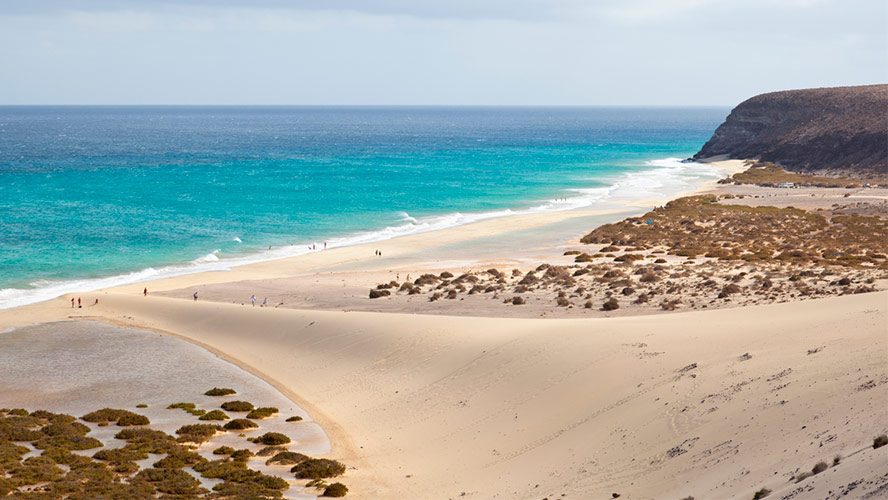
- Playa de Costa Calma: Lying alongside the resort of Costa Calma, this beach, which is approximately 2 kilometres long, is lined with hotels. It is the most accessible of all the Sotavento beaches, and therefore offers the widest range of services. The waves are pleasant despite the constant wind, lending itself to a peaceful swim. This makes the beach ideal for adults and children alike. However, as is the case with the area’s other beaches, these waters are often scattered with surfers, windsurfers and kitesurfers, many of whom rent equipment from the surf school at the end of the beach. There are also two beachfront restaurants on this main beach.
- Playa Esmeralda (North and South): Heading south, the next beach along the coast is the Playa Esmeralda. As its name might suggest, this beach’s waters are awash with turquoise tones. This beach, which can be reached in under ten minutes by car, is surrounded by cliffs and the odd remote hotel. Depending on whether the tide is in or out, you may find the beach divided into two small bays. Lastly, a sunbed rental service and a small elevated beachfront restaurant allow us to continue watching the windsurfers from afar.
- Playa de la Barca and Playa del Risco del Paso: These two beaches are found even further south, combining to form the Sotavento beach. Notable for their special meteorological conditions, both beaches lend themselves particularly well to sailing-based water sports. The conditions are so favourable, in fact, that the Playa de la Barca has held the World Windsurfing and Kiteboarding Championship during the months of July and August since 1986. There are also small tourist resorts consisting of accommodation options and beachfront bars. However, these beaches are mainly famous for the way in which their appearance changes in accordance with the lunar tides. While they are usually long and deep, comprising kilometres of sand that can be enjoyed by walkers and runners alike, the fortnightly high tide leads to the formation of a small, wave-free lagoon in the middle of the sand bank. At the Playa del Risco del Paso there is a viewpoint from which you can clearly observe this fascinating phenomenon. Also, if you’re looking for a nudist beach, the southernmost part of the Playa del Risco del Paso is well secluded, and very popular amongst nudists.
Other things to do in Costa Calma
However, Costa Calma’s leisure activities are not limited to its beaches. As we mentioned earlier, the neighbouring town of La Lajita—just a 12-minute drive away—is home to Oasis Wildlife Fuerteventura: one of the largest zoos in Spain, not to mention the Canary Islands. What originated in 1985 as a modest camel-back safari has gradually consolidated itself as an authentic tribute to savannah fauna: first with parrots, kangaroos and primates, and later with elephants, giraffes, hippos and sea lions. That’s without even mentioning the gigantic botanical garden, which holds various paths that allow you to explore Fuerteventura’s most exotic flora for yourself.
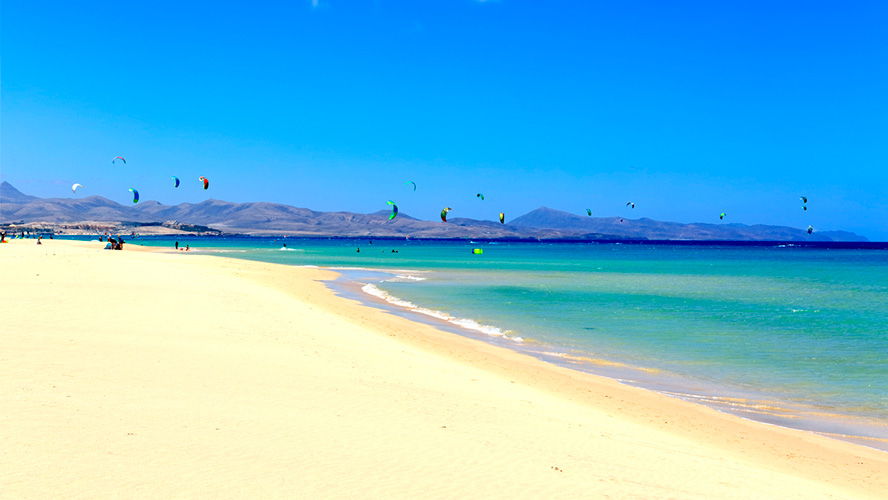
If you’re looking for nature in its purest form, behind us lies the Jandía Natural Park: home to 15,000 hectares of walkable terrain. This is formed by an arc of mountains open to the north, including the Pico de la Zarza: the island’s tallest mountain, standing at 800 metres above sea level. This is also the best stargazing location in all of Fuerteventura, with its isolation and altitude ensuring magnificent visibility of the Canarian skies.




































































